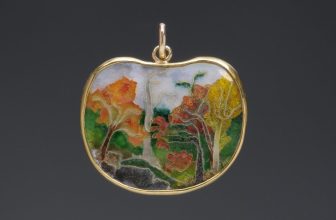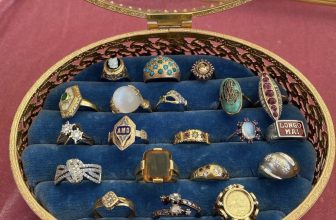
In 1858, American artist John Quidor painted one of the most iconic depictions of Washington Irving’s The Legend of Sleepy Hollow. The Headless Horseman Pursuing Ichabod Crane is a striking example of Quidor’s unique style, blending elements of folklore with the distinct artistic traditions of 19th-century America.
While artists like Thomas Cole and Frederic Church were painting grand landscapes of the American wilderness, Quidor’s work turned inward, focusing on stories of ordinary people and the supernatural elements that often existed just beneath the surface of daily life. His decision to paint Irving’s characters was not only a nod to American literature but also a commentary on the anxieties and contradictions of the young nation. Quidor’s style, which combined humor with horror, was a reflection of the uncertainty many felt during a time of rapid social and political change.

Born in 1801, John Quidor was part of a generation of artists who were beginning to establish a distinctly American artistic identity. At a time when much of American art was influenced by European traditions, Quidor chose to focus on themes drawn from American folklore, particularly those from the works of Washington Irving.
His subjects were not idealized heroes or dignified historical figures, but rather common folk, caught in strange or unsettling situations that highlighted the human experience’s darker, more ambiguous side.
Quidor’s 1858 painting, The Headless Horseman Pursuing Ichabod Crane, was inspired by Washington Irving’s 1820 short story, which follows the character of Ichabod Crane, a schoolteacher who encounters the terrifying, headless figure of the Horseman while traveling through the woods of Sleepy Hollow. Quidor’s depiction of this scene is not a literal illustration of the story but an interpretation that emphasizes the tension between fear and absurdity, a hallmark of Quidor’s style.
It’s not just a ghost story—it’s a depiction of a moment full of human vulnerability and exaggerated emotion.
For much of his life, John Quidor struggled with financial difficulties, and his work was not widely recognized during his lifetime. His paintings were often dismissed by critics who found them eccentric or too unconventional. In fact, Quidor’s Headless Horseman was exhibited only once at the National Academy of Design before disappearing into private collections. It wasn’t until 1994 that the Smithsonian American Art Museum acquired the painting, helping to restore Quidor’s place in American art history.
Today, The Headless Horseman Pursuing Ichabod Crane is recognized as one of the key works of American Romanticism, offering a vivid window into both the era’s fears and its fascination with folklore. Quidor’s portrayal of Ichabod’s flight—simultaneously comic and terrifying—captures the anxiety and confusion that marked the early years of the American nation. The painting remains a powerful reminder of the tension between myth and reality, humor and fear, that defined, perhaps still defines, much of early American culture.
The painting serves as a reminder that, throughout history, people have always faced the unknown—whether in the form of a headless rider or the uncertain challenges of their own time—and that fear and absurdity often walk hand in hand.








